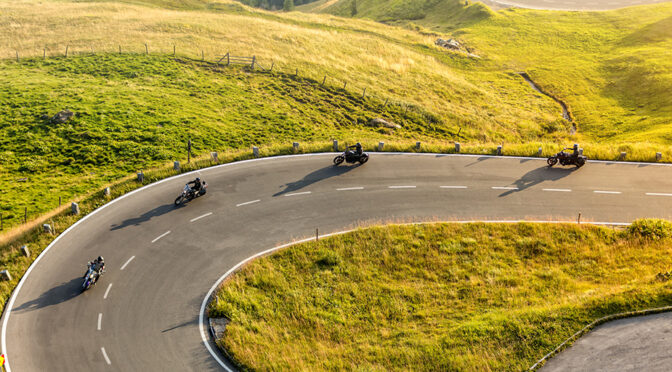Check-out our Motorcycle Tours!
Note: the article is written for countries with a right-hand side road system. If you live in a country with a left-hand side road system, please swap left and right accordingly.
Utility of trajectories
Proper motorcycle trajectories are the most important concept for safe driving and what most differentiates those who really know how to ride a motorcycle from those who think they know. In fact, good trajectory technique allows you to enormously increase your safety margins and effectiveness, thanks to the following advantages.
- Keeps you away from dangers: oncoming traffic; traffic coming from side streets; vehicles that want to pass; dirt on the outer edge of curves; people, objects, and animals on the road.
- When cornering, it allows you to lean less at the same speed ― or to go faster at the same lean angle ― compared to those who follow non-optimal trajectories.
- Eliminates the need for useless corrective maneuvers, i.e., those due to setting errors.
- It allows you to manage unexpected events on the road with maximum efficiency and safety, such as curves with a decreasing radius and unexpected curves in general, and therefore allows safer, faster, and more relaxed driving on unfamiliar roads.
In fact, there is no universal trajectory that is valid in all circumstances because, even with the same route, a trajectory can vary according to the type of road, the traffic, and the speed at which one is travelling. In my previous books and webinars, I have described a long series of cases rather than defining the general rules. Obviously, I could not be satisfied with this state of affairs: It had to be possible to arrive at general principles. Thinking about it again, I believe I’ve finally managed to distill the definitive rules for building any trajectory, and these are the subject of this article.
General rules for the position to hold on the road
Before talking about cornering trajectories, it is advisable to clarify some fundamental rules that must always be respected when traveling on the road.
A) Travel in the center of your lane
Except for the special cases described below, the general rule is to travel in the center of the correct lane, which is usually on the right, but please conform to your local regulations. This keeps us away from dangers on both sides, prevents faster riders from trying to overtake us in our same lane, and doesn’t force them to pass in an eventual right lane, which is illegal in some countries.
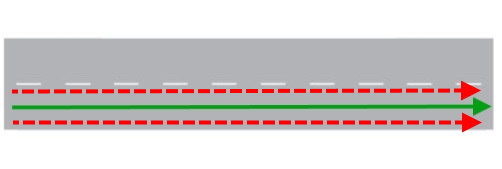
B) Allow enough room when you pass
Keep a safe side distance ― even changing lanes, whenever possible ― from other moving vehicles, especially wobbling bikes, and from people or animals, which could suddenly move sideways.

This is also true for oncoming vehicles that veer over into our lane, or even threaten to do so, if they are likely to overtake a pedestrian, a slow-moving vehicle, or any obstacle in their lane.
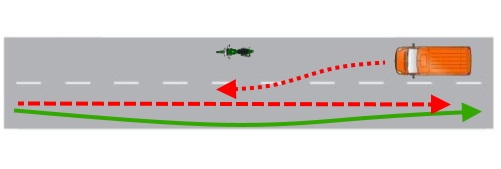
C) Travel far from parked vehicles
Keep a safe distance from parked vehicles to avoid a suddenly opened door, and from side roads and driveways to avoid the nose of a vehicle suddenly jutting a bit into the lane so the driver can see who might be coming ― which could be us!
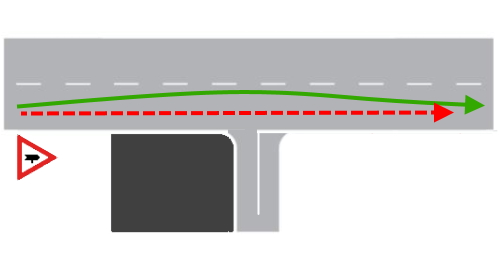
D) Do not pass in messy situations
Even if you do not cross the center solid line, do not pass if you are before or in any intersection either with or without a traffic light, a busy driveway, or a pedestrian crossing because the vehicle being passed could turn, or another vehicle or a pedestrian could pop out from any side.
This rule also applies before or at service stations on two-way roads, which are, for all intents and purposes, considered to be intersections.
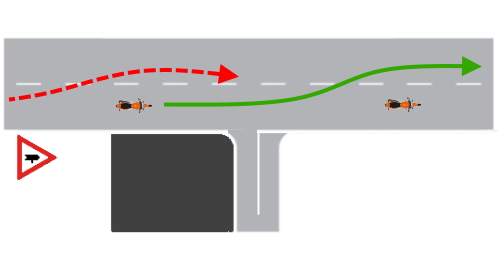
E) Use the oncoming lane only when it is safe
Passing that requires use of the oncoming lane should be done only when there is sufficient visibility and space and must be completed in the shortest time and space possible, for obvious reasons,.
F) Never lean into the oncoming lane
In left turns on two-way roads, keep the wheels at a distance from the center line such as to avoid even partially leaning into the oncoming lane, even if you have a clear view and nobody seems to be coming. In this way, you build a good habit and never need a sudden swerve when a vehicle actually comes.
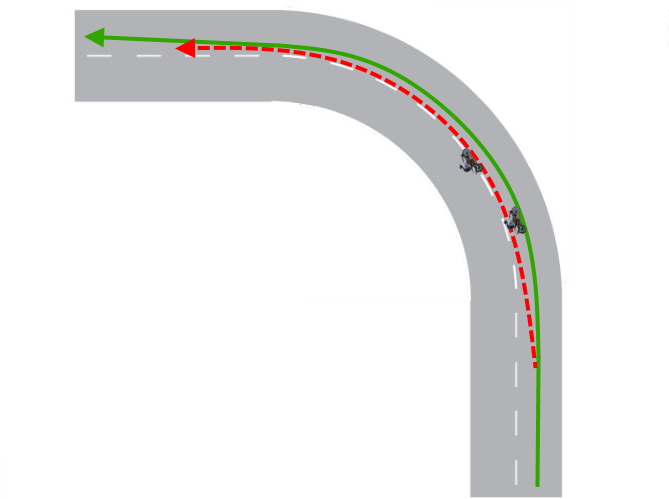
G) Keep to your side on narrow two-way roads
If the road is two-way and is so narrow that it does not allow vehicles to cross easily, travel as close as possible to the right-hand edge, strictly avoiding dirt on the edge in left-hand curves.
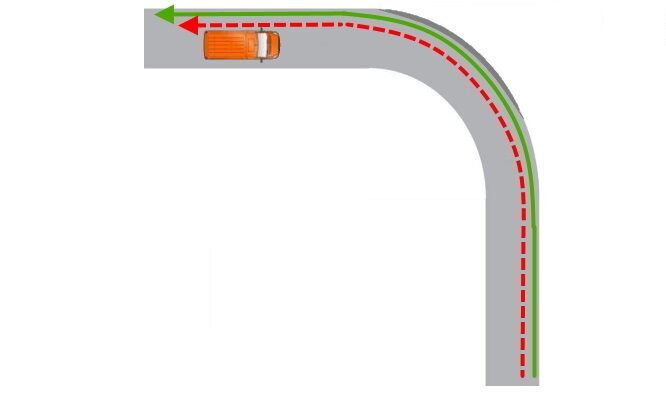
Rules for cornering on the road
Without prejudice to all the general rules listed above, the rules for building safe and effective trajectories when cornering are as follows.
1) Choose the latest possible apex
At the beginning of each bend, set a trajectory such as to approach progressively and as closely as possible the inner edge (in left-hand bends, general rule F is obviously taken into account) which should be reached as close as possible to the end of the bend or, if it is reached before, must be maintained until the end of it.
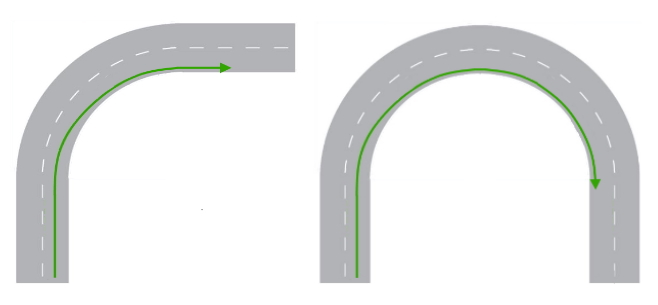
This is THE RULE. It is essential because it allows you:
- to be in the best position if entering into a subsequent curve in the opposite direction;
- to be in the best position if the curve unexpectedly becomes tighter;
- in right-hand bends, to maximize your distance from any oncoming vehicles that cross the center line.
It is a very serious mistake if your wheels do not approach the margin or, worse, move away from it while cornering because all the advantages listed above are lost, thus the risk of falls and collisions is enormously increased.
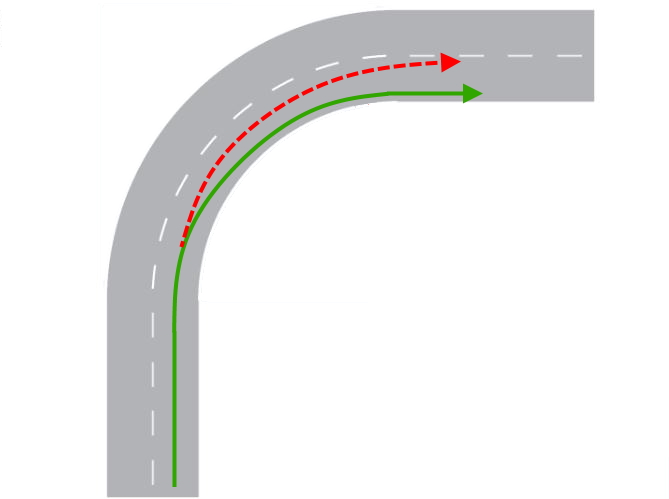
2) Start the curve near the outside edge only when useful
If the pace is such that you have to slow down to go through the curve and/or the curve is blind, you can use the width of your lane to widen out and start the curve near the outside edge.
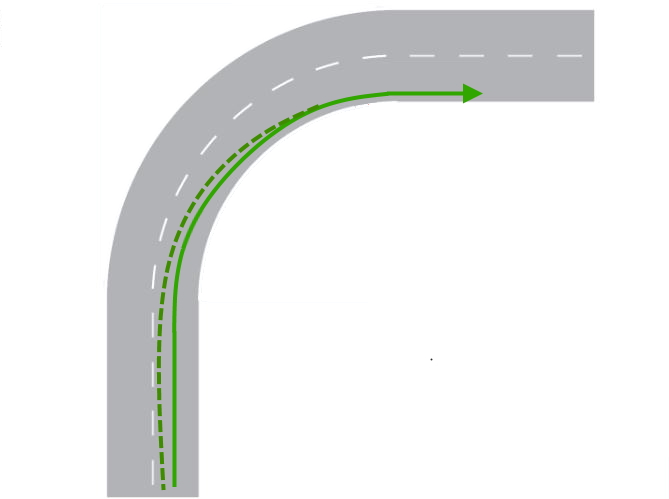
In addition to the previous rules, this one brings the following particular advantages:
- It increases the radius of the trajectory traveled and therefore reduces the lean angle at the same speed, or allows a higher speed at the same lean angle;
- It allows you to see farther in blind turns.
However, if there are no needs due to speed or visibility, this trajectory doesn’t make much sense because it only causes you to waste time and space without any advantage in return.
3) Allow yourself to widen the end of the curve only when useful
Only if the bend is followed by a straightaway or a subsequent right-hand bend at a short distance can the lane width be used to accelerate and widen before the end of the bend.
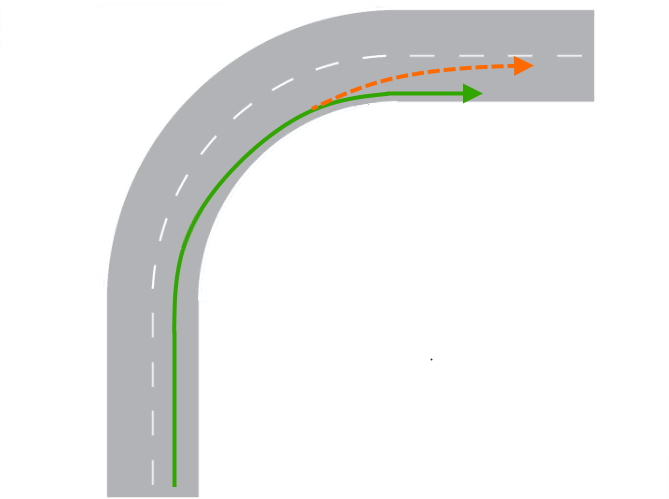
If circumstances permit, this rule allows a further increase in the radius of the trajectory traveled and therefore a higher speed out of corners. But be careful: Widening out must always be our choice and not something you are forced to do because you have set a wrong trajectory. If you go wide unintentionally, you have violated rule 1., therefore you lose all the advantages listed above and expose yourself to serious safety risks.

